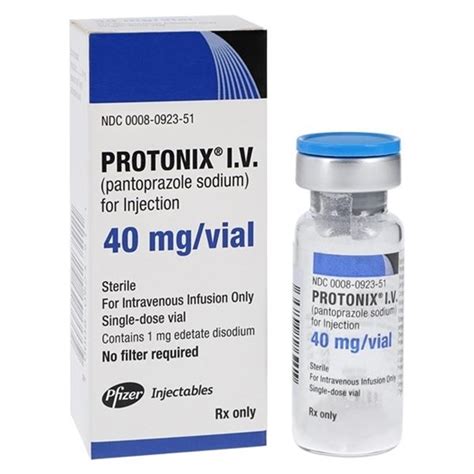Intro
Pantoprazole uses and benefits include treating acid reflux, GERD, and stomach ulcers, leveraging its proton pump inhibitor properties to reduce heartburn and promote digestive health.
Pantoprazole is a medication that has been widely used for the treatment of various gastrointestinal conditions. It belongs to a class of drugs known as proton pump inhibitors (PPIs), which work by reducing the amount of acid produced in the stomach. The importance of pantoprazole lies in its ability to provide relief from symptoms such as heartburn, acid reflux, and stomach ulcers, which can significantly impact an individual's quality of life. Understanding the uses and benefits of pantoprazole is essential for patients who are prescribed this medication, as well as for those who are considering alternative treatment options.
The prevalence of gastrointestinal disorders has increased significantly over the years, with millions of people worldwide experiencing symptoms such as heartburn, regurgitation, and difficulty swallowing. Pantoprazole has emerged as a highly effective treatment option for these conditions, offering a range of benefits that can help alleviate symptoms and improve overall health. By reducing stomach acid production, pantoprazole can help to heal and prevent damage to the esophagus, stomach, and duodenum, which can lead to more serious complications if left untreated. Furthermore, pantoprazole has been shown to be effective in treating conditions such as Zollinger-Ellison syndrome, a rare disorder characterized by excessive acid production in the stomach.
The mechanism of action of pantoprazole involves the inhibition of the proton pump in the stomach lining, which is responsible for producing hydrochloric acid. By blocking this pump, pantoprazole reduces the amount of acid produced, thereby decreasing the acidity of the stomach contents. This can help to alleviate symptoms such as heartburn and regurgitation, which occur when stomach acid flows back up into the esophagus. Additionally, pantoprazole can help to heal and prevent stomach ulcers, which can be painful and debilitating. With its ability to provide rapid and effective relief from symptoms, pantoprazole has become a popular treatment option for patients with gastrointestinal disorders.
Pantoprazole Mechanism Of Action

Pharmacokinetics Of Pantoprazole
The pharmacokinetics of pantoprazole involve the absorption, distribution, metabolism, and excretion of the drug. After oral administration, pantoprazole is rapidly absorbed into the bloodstream, with peak plasma concentrations occurring within 2-3 hours. The drug is then distributed throughout the body, with the highest concentrations found in the stomach lining. Pantoprazole is metabolized in the liver by the enzyme CYP2C19, which converts the drug into its inactive metabolites. The metabolites are then excreted in the urine and feces, with a half-life of approximately 1 hour.Pantoprazole Uses And Indications

Pantoprazole Dosage And Administration
The dosage and administration of pantoprazole vary depending on the indication and severity of the condition. For GERD, the recommended dosage is 40 mg once daily for 8 weeks. For Zollinger-Ellison syndrome, the recommended dosage is 40 mg twice daily. For peptic ulcer disease, the recommended dosage is 40 mg once daily for 8 weeks. Pantoprazole can be taken orally, with or without food, and should be swallowed whole with a glass of water. The tablets should not be crushed or chewed, as this can affect the release of the active ingredient.Pantoprazole Benefits And Advantages

Pantoprazole Side Effects And Interactions
While pantoprazole is generally well-tolerated, it can cause side effects in some patients. Common side effects include headache, diarrhea, and nausea. More serious side effects can occur, such as allergic reactions, liver damage, and increased risk of osteoporosis. Patients should be monitored closely for these side effects and should report any concerns to their doctor. Pantoprazole can also interact with other medications, such as warfarin and phenytoin, which can increase the risk of side effects. Patients should inform their doctor of all medications they are taking before starting pantoprazole.Pantoprazole Contraindications And Precautions

Pantoprazole Overdose And Toxicity
While pantoprazole is generally well-tolerated, overdose and toxicity can occur. Symptoms of overdose include confusion, dizziness, and abdominal pain. Patients who experience these symptoms should seek medical attention immediately. Treatment of overdose involves supportive care, such as hydration and monitoring of vital signs. Patients should be advised not to take more than the recommended dose of pantoprazole, as this can increase the risk of side effects and toxicity.Pantoprazole Interactions With Other Medications

Pantoprazole And Pregnancy
Pantoprazole is classified as a category B medication, which means that it is generally considered safe for use during pregnancy. However, the safety of pantoprazole in pregnant women has not been established, and patients should use the medication with caution. Patients who are pregnant or breastfeeding should inform their doctor before starting pantoprazole, as the medication can pass into breast milk and may affect the baby.Pantoprazole And Breastfeeding

Pantoprazole And Pediatric Use
Pantoprazole is not approved for use in pediatric patients, as the safety and efficacy of the medication in this population have not been established. Patients who are under the age of 18 should not take pantoprazole, unless directed by a doctor. Patients who are pregnant or breastfeeding should inform their doctor before starting pantoprazole, as the medication can pass into breast milk and may affect the baby.Pantoprazole And Geriatric Use

Pantoprazole And Hepatic Impairment
Pantoprazole can be used in patients with hepatic impairment, but patients should be monitored closely for signs of side effects, such as liver damage and increased international normalized ratio (INR). Patients who have liver disease should use pantoprazole with caution, as the medication can cause liver damage and other complications. Patients should inform their doctor of any medical conditions or allergies before starting pantoprazole.What is pantoprazole used for?
+Pantoprazole is used to treat various gastrointestinal conditions, including gastroesophageal reflux disease (GERD), Zollinger-Ellison syndrome, and peptic ulcer disease.
How does pantoprazole work?
+Pantoprazole works by irreversibly inhibiting the proton pump in the stomach lining, which is responsible for producing hydrochloric acid.
What are the common side effects of pantoprazole?
+Common side effects of pantoprazole include headache, diarrhea, and nausea. More serious side effects can occur, such as allergic reactions, liver damage, and increased risk of osteoporosis.
Can pantoprazole be used during pregnancy and breastfeeding?
+Pantoprazole can be used during pregnancy and breastfeeding, but patients should use the medication with caution, as the safety of the drug in these populations has not been established.
What are the contraindications of pantoprazole?
+Pantoprazole is contraindicated in patients with a known hypersensitivity to the drug or to any of its ingredients.
In summary, pantoprazole is a highly effective medication for the treatment of various gastrointestinal conditions, including GERD, Zollinger-Ellison syndrome, and peptic ulcer disease. By reducing stomach acid production, pantoprazole can help to alleviate symptoms such as heartburn and regurgitation, and can also help to heal and prevent stomach ulcers. While pantoprazole is generally well-tolerated, it can cause side effects, such as headache, diarrhea, and nausea, and can interact with other medications. Patients should inform their doctor of any medical conditions or allergies before starting pantoprazole, and should use the medication with caution during pregnancy and breastfeeding. We invite you to share your thoughts and experiences with pantoprazole, and to ask any questions you may have about this medication. Your feedback and comments are valuable to us, and can help to improve our understanding of the benefits and limitations of pantoprazole.
